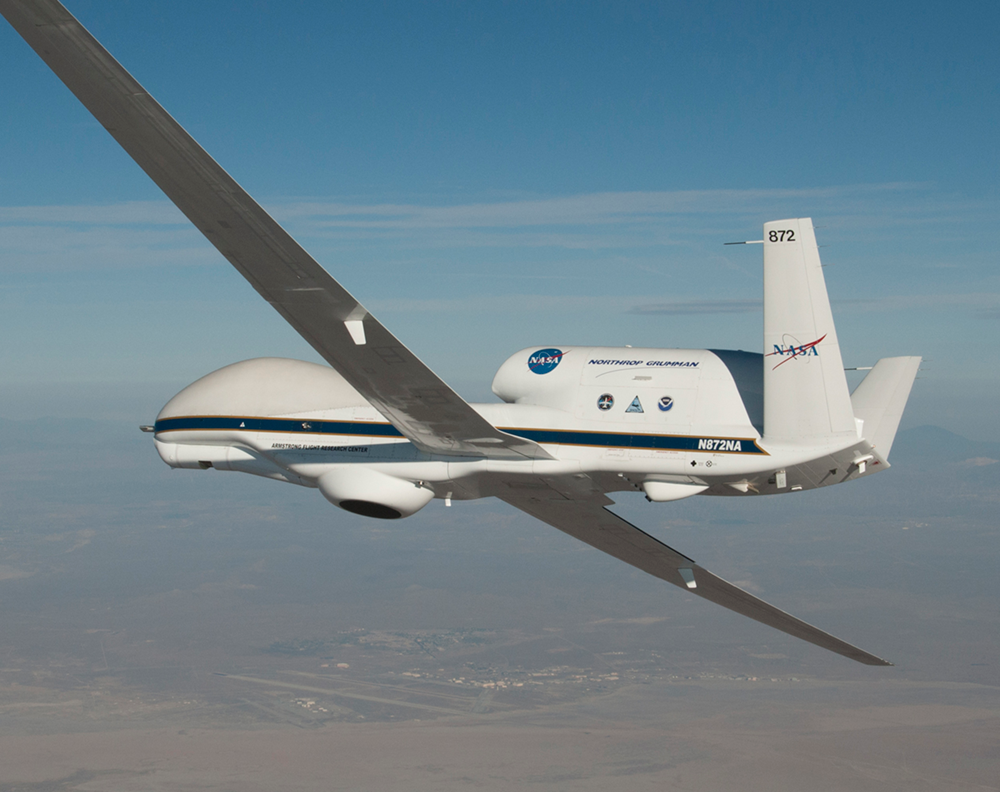NOAA’S Sensing Hazards with Operational Unmanned Technology (SHOUT) Experiment: Observations and Forecast Impacts
During 2015 and 2016, NOAA conducted three field campaigns using the NASA Global Hawk autonomous aircraft outfitted with GPS dropwindsondes and remote sensors. The Sensing Hazards with Operational Unmanned Technology (SHOUT) project evaluated the potential ability of this high-altitude aircraft to collect novel observations to improve forecasts of high-impact weather events including hurricanes. The experiment also examined the effectiveness of employing new technology of this type. A new article to be published in the Bulletin of the American Meteorological Society, led by ESRL PSD with multiple NOAA and joint institute co-authors, provides a an overview of SHOUT and summarize the various missions flown over the two-year campaign, the observations collected and their application, and the results of a diverse set of studies evaluating the impact of the data on multiple operational forecast systems.

